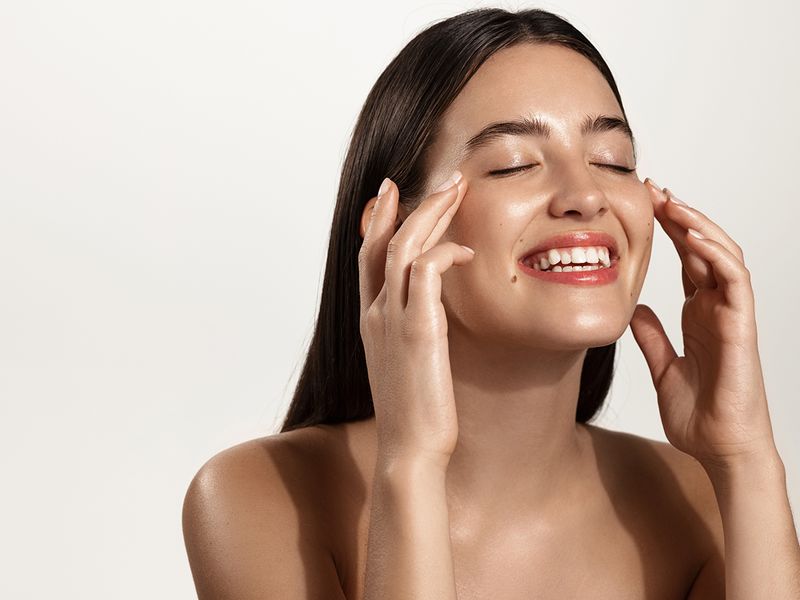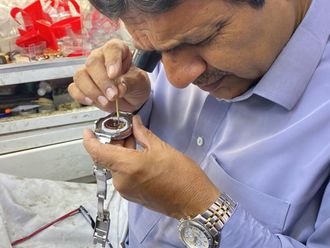
The beauty world can be a rollercoaster of trends, with a new ‘miracle’ ingredient popping up every five minutes. It’s overwhelming; we get it. However, wait! Hold onto your sheet masks, because there's an ingredient that's generating genuine excitement, not just from beauty bloggers, but from the experts themselves – dermatologists. Enter snail mucin, a unique ingredient with science-backed benefits that might just deserve a permanent spot in your routine.
Snail mucin might not be your first guess for a skincare agent, but this ingredient packs a surprising punch. It actually feels surprisingly lightweight and comfortable on the skin – no slimy mess here!
After all, snail mucin wouldn't be a K-beauty staple if it didn't deliver real results and a pampering experience.
As it’s not as well-studied as many of its other skincare ingredient counterparts, it's important to sort out the science from the hype.
Let’s get to it.
What is snail mucin?

In simple words, snail mucin is the excretion from a snail, which is why it’s also known and appears on ingredient labels as snail secretion filtrate, or SSF. It is naturally created and used by snails as a method for them to protect themselves. They produce it under stress, explains Sarah Dawes, a Dubai-based dermatologist.
Gliding over rough rocks, twigs and mud isn’t easy for the soft snails, so they are covered in a mix of soothing, repairing and regenerating slime. It not only protects the snails, but also helps them heal faster after physical injury.
Snail mucin has travelled through history, believe it or not. As far back as ancient Greece, Hippocrates, also known as the Father of Medicine (the Hippocratic oath that doctors take to this day) reportedly used to recommend crushed snails as a remedy for inflamed skin! Even Pliny the elder, Roman naturalist and commander of the Roman Empire asked for it to be used to heal battle wounds, as Dawes explains.
It wasn’t until the 1980s, when Chilean snail farmers in the Bascunan family noticed that their hands were remarkably soft, and that small wounds healed without scarring. And so, snail mucin began to be seen as a skincare product. They formulated among the first snail creams – and South Korea’s thriving beauty industry made snail mucin-based skincare global.
The benefits for snail mucin on the skin

From moisturising to boosting the collagen, snail mucin is nothing less than a star ingredient in your skincare. - According to Akreti Sobti, a Dubai-based dermatologist at Athena Dermatology, while snail mucin is initially used more for its healing properties, it is now widely popular for the intense hydration and the glass skin look. "The presence of glycoproteins, which promotes skin regeneration, hyaluronic acid, which aides hydration and glycolic acid in the snail mucin make it a popular choice in anti-ageing skin routines," she says. Thakur adds that multiple studies show the effect of snail mucin on cellular regeneration and wound healing.

The presence of glycoproteins, which promotes skin regeneration, hyaluronic acid, which aides hydration and glycolic acid in the snail mucin make it a popular choice in anti-ageing skin routines...
Here’s a quick breakdown of its benefits, according to Dawes.
Hydrates the skin: Snail mucin possesses moisturising agents that work to repair the barrier function of the skin, locking out irritants from the environment, while locking in moisture. You can bid goodbye to dryness and welcome a healthy glow!
Collagen comeback: As snail mucin is a stress-induced excretion, it’s comprised of ingredients that repair or protect from injury. These include growth factors, which work by triggering the growth of new skin cells and new collagen. This translates to fewer wrinkles and a more youthful appearance. It also contains glycolic acid, which is a collagen booster.
Soothes irritation: Allantoin, a key component in snail mucin, boasts of calming and healing properties. It can soothe irritation, smoothen rough texture, and even encourage cell regeneration.
Nutrient powerhouse: Snail mucin has several nutrients that boost your skin’s health, including anti-inflammatory zinc and healing manganese. It contains copper peptides, which are also lauded for their collagen-increasing and wrinkle-decreasing effect. To top it off, snail mucin offers antioxidant vitamins A and E, which are proven to be essential ingredients in the fight against aging.
According to a 2004 study on using snail cream for healing burn wounds by Chile-based researchers published in the Chilean journal Revisit Chilena de Terapia Ocupacional, it shows that snail mucin contains collagen, glycolic acid, elastin, hyaluronic acid, allantoins and antioxidants. Some of these are already used extensively in skincare – like hyaluronic acid for moisture, glycolic acid for exfoliation and boosting cell turnover, allantoin for soothing irritation and wound healing, but the exact concentrations of these in snail mucin is not standard.
Another 2021 review study by US-based researchers published in the journal Frontiers in bioengineering and technology, showed snail mucin can facilitate healing and has become an important resource for wound healing research with one type shown to help with skin regeneration after acute radiodermatitis, a skin condition that can arise after radiotherapy for cancer.
Are there any side effects of using snail mucin?
As Madhavi Singh, a Dubai-based dermatologist clarifies, there haven’t been any documented side effects of snail mucin. However, just like every other ingredient, people might be allergic to it. She advises, to avoid allergic reactions by testing a small amount of any new product on the inside of your forearm before slathering it all over your face.
Ethical considerations: Are the snails hurt in the process?
Previously, according to the specialists, snail mucin would sometimes be extracted by dunking the snails in salt water, subjecting them to electric shocks and agitating them – but now, companies have shifted towards what they say is an ethical way of mucin collection.
South Korean company, COSRX, says on their website cosrx.com that the snails are left to roam on a mesh net in a quiet and dark room for around an hour, and then taken back to the farm while the mucin is collected and processed. “No external stress is applied to the snails or the mesh net for two different reasons. First, it is prohibited to manufacture, distribute and sell products that have undergone animal testing in Korea. Second, optimal mucin production occurs when snails are well-rested and content.”
However, these processes are not fully transparent across companies so it is best to look up how the snail mucin is harvested for the specific product you are interested in, advise skincare specialists. There are currently emerging phyto or plant-based mucin products like okra but this hasn’t been studied in detail.
Should you add it to your routine?

Snail mucin can be used on all skin types, though its hydrating properties make it especially choice for those with dry skin, explains Singh. It’s often combined with antioxidants and retinol, as well as common skincare staples such as vitamin C, glycolic acid, and other moisturising ingredients. However, the specialists warn: If you have sensitive skin, do a patch test, first.
If you want to use it for moisturising purposes, you can try night creams that contain it, says Singh. “Bedtime is a good time for your skin to benefit, not only the hydration helps but also the other restorative and regenerative properties of the ingredient act as well,” she notes. Apply it every evening on clean skin, as the final step in your routine, layered over any other treatment products, such as toners or serums.
If you're looking to use snail mucin as a multi-purpose anti-ager, you can also seek it out in a serum.
-With inputs from Sraddha Sabu, Special to Gulf News









